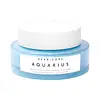What's inside
What's inside
 Key Ingredients
Key Ingredients

 Benefits
Benefits

 Concerns
Concerns

 Ingredients Side-by-side
Ingredients Side-by-side

Water
Skin ConditioningGlycerin
HumectantPolyglyceryl-4 Caprate
EmulsifyingPropanediol
SolventSodium Hyaluronate
HumectantAllantoin
Skin ConditioningHydrolyzed Rhodophyceae Extract
Ethylhexylglycerin
Skin ConditioningPolyacrylate Crosspolymer-6
Emulsion StabilisingCitric Acid
BufferingTrisodium Ethylenediamine Disuccinate
Sodium Anisate
AntimicrobialSphingomonas Ferment Extract
Skin ConditioningBeta-Glucan
Skin ConditioningSodium Citrate
BufferingXanthan Gum
EmulsifyingSorbic Acid
PreservativeBenzoic Acid
MaskingAlgin
MaskingPolylysine
Water, Glycerin, Polyglyceryl-4 Caprate, Propanediol, Sodium Hyaluronate, Allantoin, Hydrolyzed Rhodophyceae Extract, Ethylhexylglycerin, Polyacrylate Crosspolymer-6, Citric Acid, Trisodium Ethylenediamine Disuccinate, Sodium Anisate, Sphingomonas Ferment Extract, Beta-Glucan, Sodium Citrate, Xanthan Gum, Sorbic Acid, Benzoic Acid, Algin, Polylysine
Water
Skin ConditioningCaprylic/Capric Triglyceride
MaskingCetearyl Alcohol
EmollientGlycerin
HumectantSqualane
EmollientGlyceryl Caprylate
EmollientMicrocrystalline Cellulose
AbsorbentPropanediol
SolventSalix Nigra Bark Extract
Skin ProtectingZinc PCA
HumectantAloe Barbadensis Flower Extract
EmollientCamellia Sinensis Leaf Extract
AntimicrobialCoccinia Indica Fruit Extract
Skin ConditioningCorallina Officinalis Extract
Skin ConditioningCurcuma Longa Root Extract
MaskingHamamelis Virginiana Extract
AntiseborrhoeicMelia Azadirachta Flower Extract
Skin ConditioningMelia Azadirachta Leaf Extract
Skin ConditioningOcimum Basilicum Flower/Leaf Extract
TonicOcimum Sanctum Leaf Extract
Skin ConditioningSolanum Melongena Fruit Extract
Skin ConditioningTanacetum Annuum Flower Oil
MaskingLactobacillus Ferment
Skin ConditioningSodium Hyaluronate
HumectantSodium PCA
HumectantMagnesium PCA
HumectantSodium Stearoyl Glutamate
CleansingCellulose Gum
Emulsion StabilisingGlyceryl Stearate Citrate
EmollientCaprylyl Glyceryl Ether
CleansingCaprylhydroxamic Acid
Water, Caprylic/Capric Triglyceride, Cetearyl Alcohol, Glycerin, Squalane, Glyceryl Caprylate, Microcrystalline Cellulose, Propanediol, Salix Nigra Bark Extract, Zinc PCA, Aloe Barbadensis Flower Extract, Camellia Sinensis Leaf Extract, Coccinia Indica Fruit Extract, Corallina Officinalis Extract, Curcuma Longa Root Extract, Hamamelis Virginiana Extract, Melia Azadirachta Flower Extract, Melia Azadirachta Leaf Extract, Ocimum Basilicum Flower/Leaf Extract, Ocimum Sanctum Leaf Extract, Solanum Melongena Fruit Extract, Tanacetum Annuum Flower Oil, Lactobacillus Ferment, Sodium Hyaluronate, Sodium PCA, Magnesium PCA, Sodium Stearoyl Glutamate, Cellulose Gum, Glyceryl Stearate Citrate, Caprylyl Glyceryl Ether, Caprylhydroxamic Acid
 Reviews
Reviews

Ingredients Explained
These ingredients are found in both products.
Ingredients higher up in an ingredient list are typically present in a larger amount.
Glycerin is already naturally found in your skin. It helps moisturize and protect your skin.
A study from 2016 found glycerin to be more effective as a humectant than AHAs and hyaluronic acid.
As a humectant, it helps the skin stay hydrated by pulling moisture to your skin. The low molecular weight of glycerin allows it to pull moisture into the deeper layers of your skin.
Hydrated skin improves your skin barrier; Your skin barrier helps protect against irritants and bacteria.
Glycerin has also been found to have antimicrobial and antiviral properties. Due to these properties, glycerin is often used in wound and burn treatments.
In cosmetics, glycerin is usually derived from plants such as soybean or palm. However, it can also be sourced from animals, such as tallow or animal fat.
This ingredient is organic, colorless, odorless, and non-toxic.
Glycerin is the name for this ingredient in American English. British English uses Glycerol/Glycerine.
Learn more about GlycerinPropanediol is an all-star ingredient. It softens, hydrates, and smooths the skin.
It’s often used to:
Propanediol is not likely to cause sensitivity and considered safe to use. It is derived from corn or petroleum with a clear color and no scent.
Learn more about PropanediolSodium Hyaluronate is hyaluronic acid's salt form. It is commonly derived from the sodium salt of hyaluronic acid.
Like hyaluronic acid, it is great at holding water and acts as a humectant. This makes it a great skin hydrating ingredient.
Sodium Hyaluronate is naturally occurring in our bodies and is mostly found in eye fluid and joints.
These are some other common types of Hyaluronic Acid:
Learn more about Sodium HyaluronateWater. It's the most common cosmetic ingredient of all. You'll usually see it at the top of ingredient lists, meaning that it makes up the largest part of the product.
So why is it so popular? Water most often acts as a solvent - this means that it helps dissolve other ingredients into the formulation.
You'll also recognize water as that liquid we all need to stay alive. If you see this, drink a glass of water. Stay hydrated!
Learn more about Water